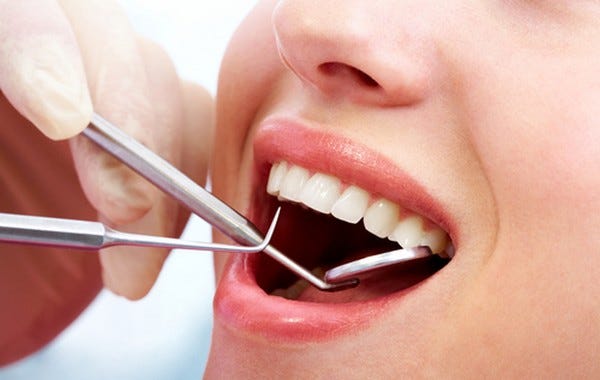How Long Does a Pimple Last? Factors That Affect Healing Time

Wondering how long does a pimple last? The duration of a pimple can vary widely depending on several factors, including its type, severity, and your skincare routine. Understanding what influences healing time can help you manage breakouts more effectively and reduce the risk of scarring. In this article, we’ll explore the key factors that impact pimple duration and share tips to promote faster recovery.
What Causes Pimples?
Pimples develop when several factors come together to clog your pores and trigger inflammation. Understanding these causes helps you manage and prevent breakouts more effectively.
1. Excess Oil (Sebum) Production
Too much oil on your skin can mix with dirt and dead skin, block pores, and cause acne.
2. Clogged Pores
Pores become blocked when oil, dirt, or dead skin builds up, which can cause pimples.
3. Bacterial Growth
When pores are blocked, bacteria multiply, causing redness, swelling, and inflammation that form pimples.
Pimples happen when oil, dead skin, and bacteria build up in pores. The deeper the blockage and inflammation, the worse the acne and the longer it takes to heal.
Stages of a Pimple
Understanding how a pimple develops can help you treat it effectively and avoid scarring. Here are the three main stages:
- Formation Stage (1–2 Days)
This is the beginning of a pimple. Excess oil, dead skin cells, and bacteria start to clog a pore, creating a small blockage under the skin. At this point, you may feel a slight bump or tenderness.
- Inflammation Stage (2–5 Days)
The body’s immune system reacts to the trapped bacteria, causing redness, swelling, and sometimes pus formation. The pimple becomes red, painful, and more noticeable.
- Healing Stage (5–10 Days)
The pimple gets smaller as redness and swelling go down. A scab may form, and light dark spots can stay while the skin heals.
A pimple forms from a clogged pore, becomes inflamed, and heals in a few days, but marks may remain.
Factors That Affect Healing Time
Several factors influence how quickly a pimple heals. Understanding them can help you manage acne more effectively and prevent scarring.
1. Type of Acne
Different types of acne heal at different rates, depending on their severity and treatment.
2. Severity of Inflammation
The more redness, swelling, and pain a pimple has, the longer it takes to heal. Inflammation damages deeper layers of skin, so recovery naturally takes more time.
3. Skin Type
Each skin type heals differently:
- Oily skin may produce more pimples, but it often recovers faster once treated.
- Dry or sensitive skin can take longer to heal and is more prone to irritation from acne treatments.
4. Treatment and Skincare Routine
Consistent care makes a big difference. Clean gently, moisturize, and use targeted treatments to heal pimples faster.
Healing time depends on your acne type, skin condition, care routine, and overall lifestyle. The better you treat your skin inside and out, the faster it recovers.
Types of Acne and Their Typical Healing Durations
Acne goes away faster or slower depending on how bad it is and how you treat it.
- Whiteheads
Whiteheads are tiny blocked pores filled with oil and dead skin. They usually heal in 1–2 weeks and get better faster with regular skincare.
- Blackheads
Blackheads are open pores blocked with oil that look dark when exposed to air. They clear in 1–2 weeks, and regular cleansing with gentle exfoliation speeds healing.
- Papules
Papules are small, red, tender bumps on the skin. They usually take a few weeks to heal. Avoid picking them, and use anti-inflammatory or acne treatments to reduce redness.
- Pustules
Pustules are red pimples with a white or yellow center filled with pus. They usually take a few weeks to heal.
- Nodules
Nodules are large, hard, and painful lumps under the skin caused by deep inflammation. They can take several weeks to heal and often need a dermatologist’s treatment.
- Cysts
Cysts are deep, painful bumps under the skin filled with fluid. They can take weeks to heal, may need a doctor’s treatment, and can leave scars if not treated.
Proper skincare, early treatment, and avoiding irritation can help them heal faster.
Tips to Promote Faster Healing
Simple tips to speed up pimple healing and avoid scars.
Do’s
- Use gentle cleansers and pimple patches early: Start treating breakouts as soon as you notice them. A mild cleanser keeps your skin clean, while pimple patches protect the area, absorb excess oil, and prevent bacteria from spreading.
- Keep your skin hydrated and protected with SPF: Even acne-prone skin needs moisture. Use an oil-free moisturizer and SPF 30+ sunscreen to protect your skin.
- Follow a consistent skincare routine: Wash, moisturize, and treat your skin daily. Consistency helps regulate oil production, keeps pores clear, and supports faster recovery.
Don’ts
- Avoid touching or popping pimples, as this can push bacteria deeper into your skin. It can make the pimple more swollen and red, and may cause scars or even infections.
- Avoid harsh scrubs and using too many strong acne products. They can irritate your skin and make pimples take longer to heal.
Be gentle with your skin, treat pimples early, keep it hydrated, and avoid anything that irritates. Consistent care is the fastest path to healthy skin.
Prevention Tips
Preventing acne requires a consistent skincare routine combined with healthy lifestyle choices.
Daily Skincare Tips
- Cleansing: Wash your face twice daily using a gentle cleanser to remove dirt, oil, and impurities without stripping your skin.
- Exfoliation: Exfoliate 1–2 times a week to eliminate dead skin cells that can clog pores, but avoid over-exfoliating, which can irritate the skin.
- Hydration: Use a lightweight, non-comedogenic moisturizer to keep your skin hydrated and support its natural protective barrier.
- Sun Protection: Apply sunscreen daily to protect your skin from UV damage, which can worsen acne and cause dark spots.
Lifestyle Factors
- Balanced Diet: Limit foods high in sugar and dairy, as they can trigger acne. Focus on whole foods, lean proteins, fruits, and vegetables to support healthy skin.
- Hydration: Drink enough water throughout the day to keep your skin nourished from within.
- Stress Management: Practice relaxation techniques such as meditation, yoga, or deep breathing to manage stress, which can lead to hormonal breakouts.
- Sleep: Ensure you get 7–8 hours of quality sleep each night to support skin regeneration and reduce inflammation.
- Hygiene Habits: Change pillowcases regularly, avoid touching your face, and clean your phone screen often to minimize bacteria exposure.
Consistency in following these steps is key to maintaining clear, healthy skin over time.
When to See a Dermatologist
Mild acne can often be managed at home, but see a dermatologist if problems persist or worsen. You should see a dermatologist if:
- Your acne is severe or painful: Deep cysts or nodules that hurt or cause scarring need medical treatment.
- Home treatments don’t work: If your acne doesn’t improve after a few weeks of using store-bought products.
- You have dark marks or scars: A dermatologist can suggest treatments like peels, laser therapy, or prescription medicine to reduce scarring.
- You get sudden or ongoing breakouts: This might be a sign of hormonal changes or another health issue.
- Your acne affects your confidence: A dermatologist can help you find effective treatments so you feel better about your skin.
Seeing a dermatologist early can help prevent lasting skin damage and make it easier to achieve healthy skin.




